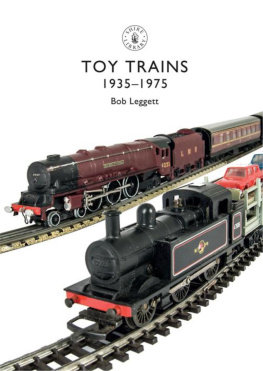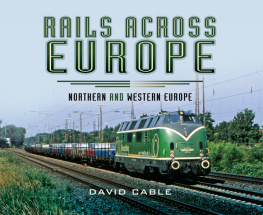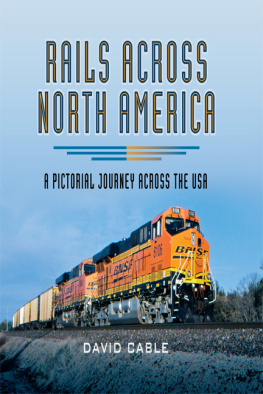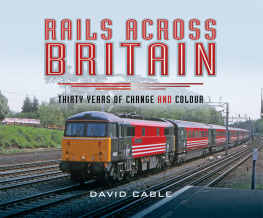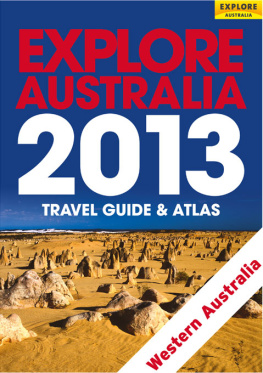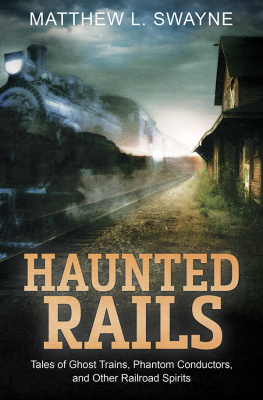First published in Great Britain in 2015 by
Pen & Sword Transport
An imprint of Pen & Sword Books Ltd
47 Church Street
Barnsley
South Yorkshire
S70 2AS
Copyright David Cable 2015
ISBN: 978 1 47384 436 0
PDF ISBN: 978 1 47384 439 1
EPUB ISBN: 978 1 47384 437 7
PRC ISBN: 978 1 47384 438 4
The right of David Cable to be identified as the author of this work has been asserted by him in accordance with the Copyright, Designs and Patents Act 1988. All rights reserved. No part of this publication may be reproduced or transmitted in any form or by any means, electronic or mechanical, including photocopy, recording or any information storage and retrieval system, without the prior written permission of the publisher, nor by way of trade or otherwise shall it be lent, re-sold, hired out or otherwise circulated without the publishers prior consent in any form of binding or cover other than that in which it is published and without a similar condition including this condition being imposed on the subsequent purchaser.
David Cable 2015
Printed and bound by Imago Publishing Limited.
Pen & Sword Books Ltd incorporates the imprints of Pen & Sword Archaeology, Atlas, Aviation, Battleground, Discovery, Family History, History, Maritime, Military, Naval, Politics, Railways, Select, Social History, Transport, True Crime, and Claymore Press, Frontline Books, Leo Cooper, Praetorian Press, Remember When, Seaforth Publishing and Wharncliffe.
For a complete list of Pen & Sword titles please contact
Pen & Sword Books Limited
47 Church Street, Barnsley, South Yorkshire, S70 2AS, England
E-mail:
Website: www.pen-and-sword.co.uk
DAVID CABLE OTHER PUBLICATIONS
Railfreight in Colour (for the modeller and historian)
BR Passenger Sectors in Colour (for the modeller and historian)
Lost Liveries of Privatisation in Colour (for the modeller and historian)
Hydraulics in the West
The Blue Diesel Era
Rails across North America A Pictorial Journey across the USA
Rails across Canada A Pictorial Journey across Canada
Contents
Introduction

This is a book of photographs of trains that I have taken in various parts of the mainland of the Commonwealth of Australia, firstly of mainly preserved steam operations in South Australia, where I lived between 1967 and 1973, and then at the main lines in the five mainland states during nine holidays taken throughout the twenty-first century. Schedules have never allowed time to visit Tasmania or the two territories.
The comments about rolling stock are largely from my own observations of what I regard as a dynamic set of operations in a country full of fascinating and attractive locations, even if the sun didnt shine every day! The book will be primarily marketed in Australia, but also elsewhere such as the USA and UK. The text below is therefore written to provide background for those people, so I am afraid that Aussies will find it like telling your grandmother to suck eggs, but I hope they will enjoy the pictures.
The Railway Systems
The early history of Australian railways led to one of the most chaotic situations relating to transport systems anywhere in the world.
As railways started to become a reliable means of transportation, each of the original state cities on the continent employed engineers to initiate a railway system based about the city hub and into its environs, but failing to recognise that, in time, development would require links between the states and the cities.
So it was unfortunate that each engineer had his own ideas as to what track gauge to use. The net result was that only two states Victoria and South Australia chose a gauge that allowed straightforward interconnection, whereas at every other state boundary on the mainland, people and freight had to be unloaded and reloaded.
The individual choices were that New South Wales selected standard 4 8 1/2 /1,435mm gauge, Victoria and South Australia the Irish 5 3/1,600mm, and Queensland, Western Australia and parts of South Australia the light 3 6 /1,067mm version. Later-built lines, such as the link across the Nullarbor desert between SA and WA and the iron ore lines in the Pilbara region of Western Australia, have been of standard gauge.
As a result, once the original imports of locomotives and rolling stock to get each system established were up and running and the systems expanded, each of the states developed their own designs to deal with the extra requirements.
It was not until the 1960s that the decision was made that the state capitals should all be connected by one standard gauge track system, and to be able to generate standard locomotives and rolling stock to operate throughout the new lines. These have now been enhanced by the line through Alice Springs to Darwin, and the short branch from Port Augusta to the steel-producing town of Whyalla in South Australia.
However, most of the original lines are still extant and often well used. For example, in Queensland, the state capital Brisbane is close to the state border, so that the standard gauge from New South Wales hardly penetrates the state, which therefore still uses the original 3 6 /1,067mm lines. In Western Australia, the narrow gauge tracks still carry almost all traffic around Perth and the south western parts of the state. Suburban and country lines in Victoria are broad gauge operated, and there is still one broad gauge branch in South Australia, plus the remote narrow gauge system based on Port Lincoln. So it is only in New South Wales where the interstate and intrastate operations are fully integrated.

The complications of different track widths are exemplified by this old triple gauge turnout at Gladstone SA. (DC Collection)
In establishing the systems as they developed, what might be called the standard British Empire methods of track laying were used. To be as economical as possible, these were based on following the contours of the land with the minimum of engineering works in terms of cuttings, embankments, tunnels and viaducts, level crossings providing access for road vehicles and animal stock. Single tracks with occasional passing loops provided sufficient capacity outside of conurbations, although with the passage of time, widening these to double tracks became necessary as traffic grew. And between Newcastle and Maitland in New South Wales, traffic is now of a density to require four tracks.
What is, perhaps, surprising is that in spite of the very few overbridges and tunnels, the loading gauge still restricts the use of double-stacked containers as widely used in North America, apart from between Adelaide and Perth, even though the cost of enlarging them would be relatively small, and would give a substantial increase in some line capacity.
The infrastructure is quite varied, with lightly laid narrow gauge tracks with limited axle loadings in some of the remoter country areas, up to heavy rail, deep ballasted lines for the interstate and heavy haulage operations.
The Railway Companies
In the first years, the railways were owned and operated by their respective states, plus Commonwealth Railways, which built the line from Port Augusta to Kalgoorlie across the Nullarbor desert. But over time various mergers took place, sectorisation developed and private companies began to gain access to the main lines. The major players in more recent times comprise:
Next page



